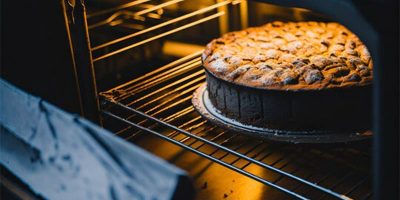Would you love to eat an unleavened cake? Well, forget eating, probably you won’t even go near it. Because unraised cakes are not only aesthetically unappealing but do not taste as good as their counterparts. That’s exactly the reason why a fluffy and raised cake disappears in minutes because resisting them is like witnessing a flying pig. It’s impossible!!
Now, if you are thinking that making leavened cakes is a mammoth task or would be requiring some hidden talent, then you are highly mistaken. All you need to know is the secret ingredients. And, it is raising agents. Every baking recipe makes use of these raising agents for light, upraised cakes and baking goods.
What Are Raising Agents and How it Works?
Baking raising agents are biological or chemical compounds that are added to dough or batter, causing a foaming action (gas bubbles) that lightens, softens the mixture; thus giving you a porous raised baking product.
The main ingredient of dough or batter is flour that contains proteins of gliadin and glutenin. When water is added, they form a matrix, a new protein called gluten. Due to the gluten, the dough is elastic. Now, leavening agents are added, which forms thousands of bubbles in the batter or dough. The bubbles are of carbon dioxide gas or occasionally hydrogen. Due to the gelatinizing of the starch, the bubbles remain trapped. The heat of the oven allows the batter to set while bubbles are in their inflated state. Gradually, the air pockets hold their shape and cause the cake to inflate. Small air pockets give a smooth, squishy texture to the cake, whereas the large air pockets make cake crusty.
An alternative to leavening agents is mechanical raising and natural leavening.
The Different Types of Raising Agents used in Bakery
1) Biological Raising/Leavening Agent:
- Yeast: It is a single-cell fungus that feeds on simple sugars to produce carbon dioxide. It is highly used in the process of fermentation without it the existence of beer, bread and wine would be negligible. It is also used as a raising agent in bakeries and is popularly known as baker’s yeast. Yeast is stirred in warm water and is allowed to stand for at least 5 minutes. This step activates the yeast. However, if you are using instant yeast, it can be directly added to the dough or batter.
2) Chemical Raising/Leavening Agents:
- Baking Powder: There is one thing common between baking cakes, cupcakes, and brownies, it’s baking powder. It is a combination of baking soda and some acidic substances added for volume and texture. When baking powder is moistened, the chemical reactions begin. It is known as a double-acting agent because it works when mixed and gives another burst of gas when heated.
- Baking Soda: Scientifically, it is known as bicarbonate or bicarbonate of soda. It is alkaline in nature, meaning it needs to be added to an acidic ingredient for the formation of carbon dioxide. Unlike the baking powder, it is a single-acting agent and acts quickly. Acidic ingredients like buttermilk, yoghurt, lemon juice, sour cream, molasses activate baking soda immediately.
- Cream of Tartar: A fine white powder extracted from the tartaric acid that crystallizes during the fermentation process. It is often known by the name of potassium salt. Mostly, it is added to baking soda to make baking powder. It has uses in increasing stability and volume.
3) Mechanical Raising/Leavening Agents:
- Whisking/Beating/Creaming/Sieving: Whisking of the batter; creaming of fat and sugar; sieving flour and kneading the dough are all examples of mechanical raising or leavening. These physical actions are undertaken to incorporate pockets of air into the dough or batter, which will expand upon heating.
4) Natural Raising/Leavening Agents
- Steam: If you are running out of the leavening agents and also do not wish to do some mechanical actions for raising the dough, let nature do its magic. Steam is a powerful raising agent. Puff and choux pastry are baked using only steam as their leavening agent. The key is to ensure that the dough captures the steam.
Use these baking raising agents for soft, fluffy, and raised cakes and baked goods. If still, you are unable to get the desired results, always remember you are blessed with the convenience of online cake delivery.





